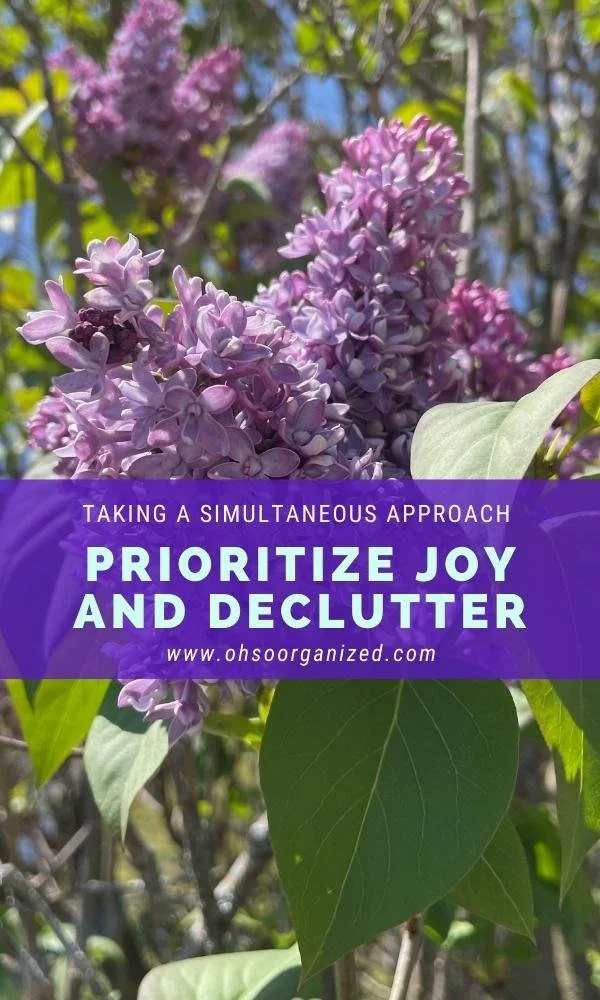Many of my virtual organizing clients are overwhelmed by clutter, so they reach out for help. One of the common threads is the sense they need to postpone all fun and joy until they completely declutter. In truth, it’s challenging to work intensely without taking a break or replenishing your reserves. Having joy-infused counterbalances to organizing can bring renewed energy and focus.
Earlier this week, I had an Executive Mom Nest meeting where we talked about ways to prioritize joy. Transformational Coach Advisor Leesa Askew gave us a writing exercise to list 20 things that bring us joy. They didn’t have to be big things. Our lists mainly focused on simple stuff. Some of mine included:
Taking that first sip of coffee in the morning
Walking in nature
Walking with a friend
Writing in my journal
Being at the beach
Sitting in the sun
Taking photos
Talking with our kids
Smelling the lilacs
At the end of the meeting, we were encouraged to select one item from our joy list and commit to doing it that day. I knew right away which one to choose- smelling the lilacs! As their blooming season is short, I didn’t want to miss the opportunity to take in their intoxicating scent.
While running errands, I had driven past this gorgeous blooming bush of lilacs several times. I thought, “Linda, stop the car, get out, and smell them.” However, in the interest of getting things done, I kept driving. Or, I chose to postpone this simple moment of joy to do other things. Does that sound familiar? Have you ever decided not to have fun or lean into a special moment because you were preoccupied with something else?
After the prioritizing joy conversation, I made an intentional trip to the lilacs. When I arrived, I parked my car and walked down the block. I leaned over, placed my nose close to the lavender flowers, took a deep breath, and let the fragrance flood my senses. It was a happy moment.
“Prioritizing joy and decluttering aren’t mutually exclusive.”
For you, joy might come in other forms. Instead of nature, lilacs, and sun, you might prefer a coffee date with a friend, curling up with a good book, or eating by candlelight. The possibilities abound. You can simultaneously prioritize decluttering, organizing, or any large project and engage in joyous moments. Prioritizing joy and decluttering aren’t mutually exclusive. In fact, prioritizing regular encounters with delight will help you approach the challenging parts of your day with clarity and perspective.
Do you postpone fun and joy when you’re feeling overwhelmed by clutter? What brings you joy? What overwhelms you? I’d love to hear your thoughts. I invite you to join the conversation.













